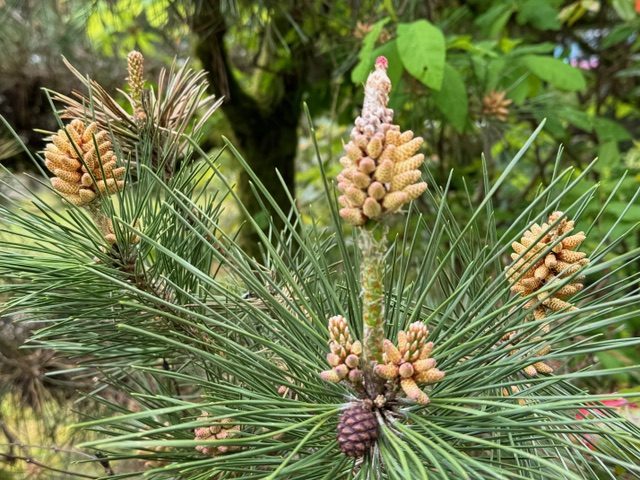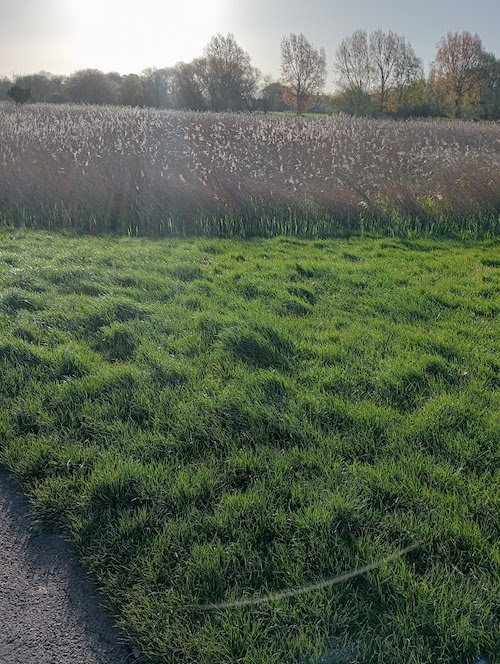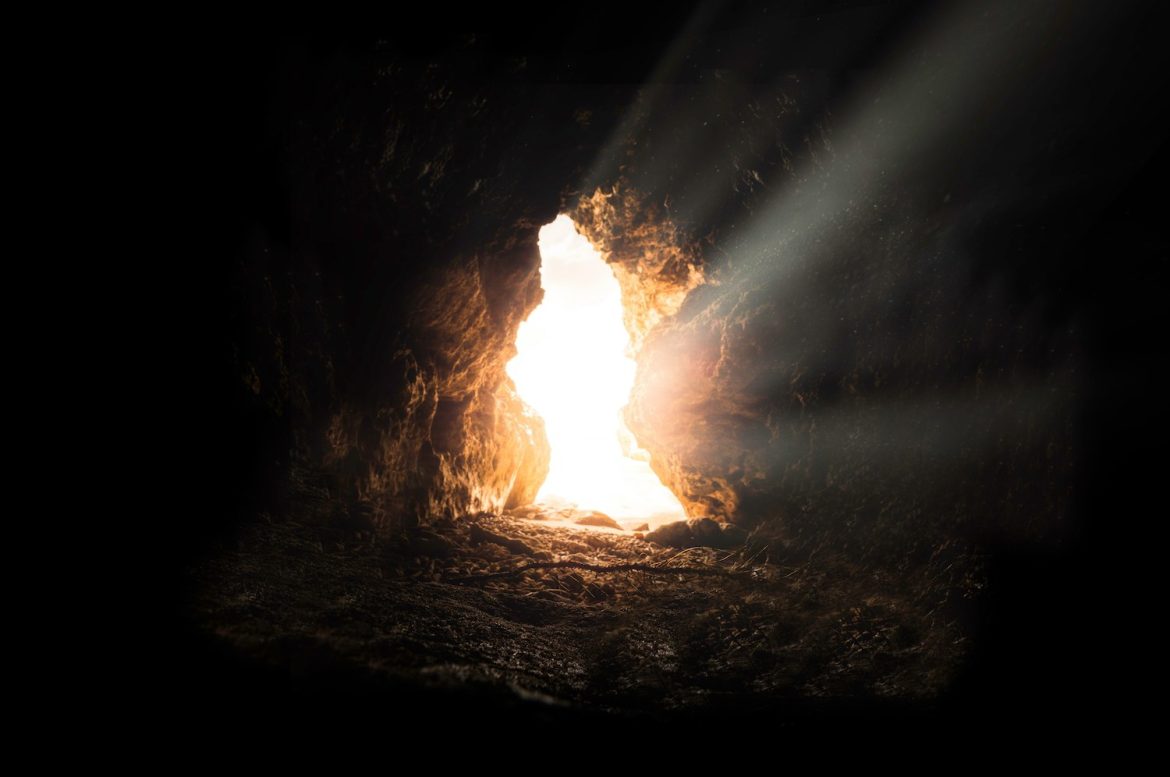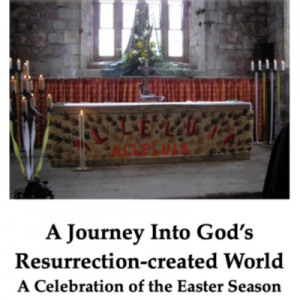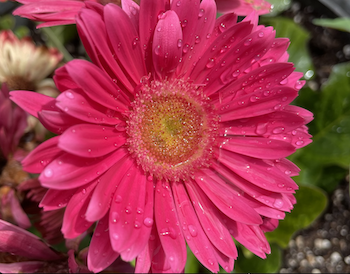It has been a chaotic week. On Wednesday we started a bathroom renovation. Its the smallest room in the house but it is amazing how much it disrupts our lives having it dismantled and reconstructed. It has not been touched for over 30 years and I suspect that some of it is the original 1910 construction.
It’s a little like our own lives. When God decides to renew and reconstruct something that has gone untouched since the early days of our lives it can be quite chaotic, sometimes painful but always renewing and rejuvenating. More of that next week though.
Unfortunately that is not the only challenging thing happening in our lives this last week. On Sunday I heard that Alex Tang, author of Tang’s Takeways on Substack and a contributor to Godspacelight for over 15 years, passed away suddenly. I am devastated. I never met Alex, but felt he became a friend through all the interactions we shared. I appreciated his wit, his wisdom and thoughtful reflections. He was a man of great spiritual insight and deep faith. Like me he was also a physician and a lover of science fiction. He will be sorely missed, not only in his home country of Malaysia but throughout the world which his writings impacted profusely. May God’s grace be with his family and all those who mourn his passing.
In the midst of all this I am busy preparing for the Spirituality of Gardening webinar on Saturday. If you have not signed up yet, now is the time to do that. My recent research into the impact of nature on our physical, emotional and spiritual health shows why I think this is so important. As a recent email from the Arbor Foundation said: “Some say laughter is the best medicine. But according to recent findings, the best medicine for your mental health might just be trees” And I would add plants and flowers and oceans and mountains and nature in all its many diverse forms. The first thing God does after creation is to plant a garden. We are made of the earth and for the earth and all the research does in reinforce that.
Thursday is Ascension Day, not one I was familiar with until a few years ago. This post by Paul Neeley is very helpful in explaining what this is all about and why it is important. This fortieth day after Easter Sunday is a day of great significance as we celebration the ascension of Christ into heaven. It is also and, in some ways more importantly, a celebration of the new creation that Jesus’ resurrection brought into being. What beautiful imagery to carry with us for the rest of the season until Pentecost. It seems such an appropriate celebration for those of us who are interested in sustainability and creation care.
My Meditation Monday: Do You Need An Excuse to Get Outside? emphasized that too. (Audio available here) As I mentioned, a growing number of followers of Jesus admit that the place they feel closest to God is in nature. Eco-spirituality is gaining momentum in both the Protestant and Catholic Churches and movements like Wild Church, and Forest Church are attracting adherents in many Western countries. Others are disconnecting from church all together and creating their own nature based expressions of faith or drawing from indigenous or Celtic perspectives. It’s not surprising that research continues to demonstrate that being outside and experiencing nature can improve our mental and physical health and increase our ability to focus.”
I loved Diane Woodrow’s post What Do You See As The Characteristics of God”s New World? and the way she applies that question to today’s world. Her question: “So what are God’s characteristics in this new world? Not just this world of emerging spring but this world of emerging surveillance technology and instant information; when if I’m not sure of something I just google it. Where is God in all of this? “
Freerange Friday: At The Table With Jesus – This Time It’s A Picnic provided Lilly Lewin’s usual thoughtful and creative approach to following Jesus. I loved her suggestion that we sit down with Jesus for a picnic on the beach, imagery that has long held my attention.
I also enjoyed Carol Dixon’s Easter Pondering and her suggestion that we look back over the stories of people who met with Jesus after his resurrection and ponder each word as we go.
On Wednesday we posted another Liturgical Rebels’ episode, this one an interview with Lilly Lewin and her experiences as a worship leader and curator. As we have all seen over the last few years Lilly is incredibly creative and this episode shares many examples of that. Don’t miss it and the preceding interviews with Drew Jackson, Scott Erickson, Kreg Yingst, Mark Pierson and my introductory episode with Forrest Inslee. This week I will interview Tony Jones and Brian McLaren.
Many blessings on you as we continue your journey through Eastertide.
Christ of the pilgrim’s way,
Guide us, on our earthly journeys,
Pilgrimages toward your heart.
Prepare us,
Help us throw off what distracts,
Let go of our burdens,
And discern what is essential.
Lead us,
Into the company of friends.
Together may we travel far,
Looking with fresh eyes,
Prepared for new landscapes,
Ready to sing a new song.
Teach us,
Your unforced rhythms of grace,
Let us learn to live freely and lightly,
All the pilgrim days of our lives.
photo from Alex Tang’s substack Tang’s Takeaways
 Spirituality of Gardening – A virtual retreat THIS SATURDAY
Spirituality of Gardening – A virtual retreat THIS SATURDAY
On May 11 from 9:30-12:30 pm PT (check my timezone) We will discuss connections between community, spirituality and gardening. Explore the wonderful ways that God and God’s story are revealed through the rhythms of planting, growing and harvesting as well as the beauty of nature. This webinar is for anyone who admires the beauty of God’s good creation, likes to walk in nature, sit by the ocean or just relax and listen to the birds in the trees. It is based on Christine Sine’s popular book, To Garden with God and each participant will receive a digital copy of this book.
NOTE: The length of this retreat has been changed – 2 hours just
by Christine Sine
Over the last couple of weeks I have shared a number of posts about the values to our spiritual well being of getting outside to pray, to draw close to God and strengthen our spiritual well being. On Saturday, in my reminder about the Spirituality of Gardening Webinar I asked if we needed an excuse to get out of the house. The answer is a resounding “yes”. It is not just good for our spiritual well being but for our physical, and emotional wellbeing too.
A growing number of followers of Jesus admit that the place they feel closest to God is in nature. Eco-spirituality is gaining momentum in both the Protestant and Catholic Churches and movements like Wild Church, and Forest Church are attracting adherents in many Western countries. Others are disconnecting from church all together and creating their own nature based expressions of faith or drawing from indigenous or Celtic perspectives. It’s not surprising. Research continues to demonstrate that being outside and experiencing nature can improve our mental and physical health and increase our ability to focus. In Britain in particular, green social prescribing is becoming more common and of course all of us have heard of the benefits of forest bathing which now reaches far beyond Japan in its impact.
Unfortunately, many of us spend a good part of our day in front of a screen — computer, TV, or smartphone. We spend less time outside experiencing the natural world. Research from the US Department of Agriculture, suggests however that getting outside has huge benefits for all of us. People who live near parks and green space have less mental distress, are more physically active, and have longer life spans. Exposure to nature may decrease death from chronic disease. When people exercise outdoors in nature, they do so for longer periods of time and at greater intensities. Positive health effects are enhanced when green space includes water.
You don’t have to bike a triathlon or ski down a mountain to enjoy exercise in nature. Any activity that gets your body moving in a way that’s doable for you, like gardening, playing with your dog at the park, or washing your car, can offer some health benefits.
As you know I love being outdoors, and not just in the garden. I make every excuse possible to go outside to photograph the neighbourhood, smell the flowers and get some exercise. My Fitbit reminds me every hour that I need to stretch and spend time walking so a quick dash outside is always a welcome break. I try to incorporate breathing exercises, reading prayers, or other spiritual exercises into these breaks and I know how much of a difference this makes for me.
If you are not convinced yet here are a few ideas that reinforce the fact that we are both made of the earth and for the earth.
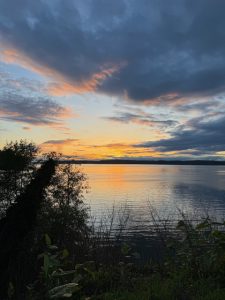
1. Nature improves our thinking, reasoning, and other mental abilities.
When we’re in urban environments or the office all day, we can experience sensory overload, resulting in tension and mental fatigue. Studies show that our minds and bodies relax in nature which increases feelings of pleasure and helps us concentrate and focus more effectively, according to studies in the National Library of Medicine.
Being outdoors also relaxes our minds, something that I am very aware of as I walk my dog or wander my garden in the afternoon. Nature provides a mental health break, allowing us to temporarily escape the demands of everyday life. It can also boost your creativity and problem-solving abilities. If you’re suffering from writer’s block or can’t seem to solve a problem at work, step outside for a few minutes of fresh air. Walk leisurely around your neighborhood or office. The answers might come tumbling into your mind.
2. Nature improves physical wellness
Getting out into nature often encourages us to walk, bike, hike, or kayak more frequently. People typically engage in regular physical activity when they’re in nature. So, stepping outside can help you keep a healthy weight or even lose weight by increasing activity levels.
Studies show that being in nature reduces cortisol levels, muscle tension, and lowers heart rate and blood pressure resulting in lower rates of heart disease. The great outdoors can also helps increase your vitamin D level, which is important for our bones, blood cells, and immune system.
3. Being outside improves mental health
Nature helps decrease your anxiety levels and can help lessen stress and feelings of anger. Exercise can also help this, but it’s even better when you’re outside.
Regular access to green spaces has been linked to lower risks of depression and improved concentration and attention. Being outside allows us to be social and come together with family, friends, or even people you don’t know who are also looking for a great hiking trail, for example.
Additionally, you may find that you sleep better when you are regularly outside. Daily exposure to natural light helps regulate sleep/wake cycles. By making sure that you get outside in sunlight every day, you can improve your ability to sleep at night. One of my friends has developed an evening ritual where she sits outside to watch the sunset every evening while reciting scripture and prayers. It has made a huge difference to her sleep. The nice thing about sunlight is that it doesn’t cost a thing. To get a daily dose, you only need to step outdoors.
Just keep in mind that sunlight needs to enter your eyes to affect your circadian rhythm. If you’re hoping to improve your sleep, picnicking at the beach may help more than napping in a shady wooded area.
Nature can also have benefits for children. One study in Denmark examined 900,000 residents born between 1985 and 2003. They found that children who lived in neighborhoods with little green space had up to 55% higher risk of developing a psychiatric disorder independent from effects of other known risk factors.
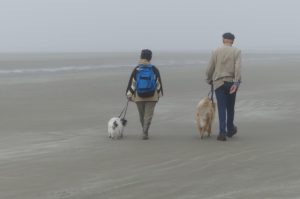
4. Better breathing
Air pollution can trigger allergies, asthma, and other respiratory diseases, which I am very aware of as I suffer from both allergies and asthma.. It might surprise you to learn, though, that indoor concentrations of air pollutants are often two to five times higher than outdoor concentrations. Glass cleaners, air fresheners, bleach and cleaning sprays are all filled with toxic chemicals. It’s one of the reasons I have so many plants inside. They help improve the air quality. But spending more time in natural green spaces could help lower your risk of respiratory concerns.
5. Boosted immune function
We all became aware during the COVID shutdown that good air circulation made us less vulnerable to this and other viruses. However, spending time outdoors helps our immune system in other ways too. Exposure to microorganisms found in the soil boost our immune system and make us less vulnerable to serious illnesses. That is one of the reasons that hospitals often give birth to particularly virulent viruses and bacteria. In a completely sterile environment, our immune systems lose their ability to recognize what is and isn’t dangerous. It may then set off a red alert for any microorganism it comes across, which can lead to chronic inflammation. As well as that, soil contains antibiotic like substances that help us resist infection. So, while soap is a wonderful invention, getting muddy once in a while, even eating al little dirt, can be good for us, too.
6. Protection from short-sightedness
There is even evidence that suggests children who spend plenty of time outside have a lower chance of becoming nearsighted. Increasing the eye-work distance when doing close-up work and taking a break after 30 minutes of close-up work also offers some protection. Experts are not sure why, but speculate that natural light offers a brighter and richer collection of light wavelengths to see with. Second, the outdoors lets your eye practice looking at objects from various distances. third, light stimulates the retina to produce dopamine, which prevents your eyeball from stretching out and warping your vision. Regular outdoor activities in childhood, like playing catch, swimming, and going sledding might just save your kid a trip to the optometrist down the line. Maybe doing church outside will help too.
Evidently 2 hours a week is seen as the magic mark. Below that nature does not seem to make much of a difference. However when you think about it that is only 17 minutes a day, or 10 minutes in the morning and 10 minutes in the evening.
If you have a busy schedule and don’t have much time to get outside, these may help you get a quick nature fix:
- Stand outside with the sun on your face or take off your shoes to feel the grass in between your toes. If the weather isn’t great, take a few minutes to gaze out a window at the scenery outside. Do this twice a day for 10 minutes once in the morning and once in the evening. Consider reciting a Psalm like Psalm 145 as you do so.
- Go out for a half hour walk every couple of days.
- Eat your lunch outside or plan some outside meetings or phone calls.
Other fun ideas to experience nature
- Plan a picnic with friends or family. Find a park or green space to enjoy a meal and maybe take a frisbee or soccer ball.
- Rent a kayak or canoe on a nearby river or lake.
- Find a hiking trail you’ve never been to.
- Dust off your bicycle and go for an easy ride around the neighborhood. Even an e-bike will do the job.
- Take your dog for a walk to a nearby park — they’ll enjoy it just as much as you will.
- Grab a book and find a shady tree to sit under.
- Plant a vegetable or flower garden in your yard or on your patio.
- Take up golfing, pickle ball or tennis with a friend or family member.
- Meet up with a neighbor or friend to walk daily or weekly.
- Go bird watching at a nearby state park or wildlife habitat.
So it’s time to figure out how to make your outside time count. Read back through my posts from the last couple of weeks which suggest how to pray, draw close to God and strengthen our spiritual health while outside. Prayerfully consider ways that you too could come to know the God who is everywhere and in everything in a more intimate way. It is good for us, for God and for our planet.
This question of Christine Sine’s challenged me after a walk around the park with my morning dog walking crew where we discussed all things from the wars in Ukraine and Gaza to climate change to Amazon deliveries and watched the Little Egrets making out on the pond.
This is our new world – of distant wars and long mild wet winters, of excitement at the return of birds to our area and the latest series on Amazon Prime. All of it is a new world. It isn’t being a grumpy old woman to say that “things weren’t like this in my day”. Yes there were distant wars and even here in the UK we had the Falkland wars and the civil war in Ireland, and the winters weren’t all snow to play in and summers of gentle golden days. I protested about nuclear weapons and looked for a more sustainable way of life even then. But the difference in this new world is that all of the things that are going on are fed into our pockets via our phones each day. Big Brother watching you is not a sci-fi wonder but we’ve all had adverts appear on our various social media feeds after we’ve had a conversation about those things. Our data is being gathered in a way it never was before.
We now see our politicians in all their guises. Although mainly the news outlets like to show us the worst of them, show us their faults and not their strengths. Though this was known before this new world of ours makes it instant and hard to miss.
So what are God’s characteristics in this new world? Not just this world of emerging spring but this world of emerging surveillance technology and instant information; when if I’m not sure of something I just google it. Where is God in all of this?
For most of us we will see God in the Egrets mating and the sunrise, as well as in the random groupings of friendships on the park and elsewhere. But I believe God is also in the emerging technologies and even in the constant media streams. But we need to step back, as we would have had to do with God in previous ages, and breath the Spirit of God in.
God has been easy to find or a rapid quick fix for our lives. God has always only ever ask for our hearts and not our deeds.
I’m reading a lot of Henri Nouwen at the moment and all he talks about is letting God into our hearts and also letting ourselves into our hearts. Nouwen has been dead since 1996 so was talking from what we might say was a slower age. But there always have been things to distract us from God, whether that be technology or whatever. There has never been a golden age when God was easy to find. Even when Jesus walked the earth not everyone took the time out to hang out with the incarnate God. Even Adam and Eve did their own thing rather than what they knew God wanted. God only hung out with them in the cool of the day. The rest of the day they were left to themselves. Though I do believe God was all the time but just hung out with t hem in the cool of the day. I think even when the serpent tempted them God was there if they had turned to God. But that’s for another blog 🙂
So for me in this age of new world/new season I think God’s characteristics haven’t change. God is unchangeable, always with us, always waiting for us to look to them. God wants us to know and love ourselves so we can open up and let God love and look after us fully.
So as my friends pontificate on issues micro and macro I see God in them, in their concerns and their humour, in the joy we have of being together, in the fear that are expressed and the longings that slip out. I do see God in the opening blossom and the shafts of sunlight and the mating egrets but I do see so much of God in my dog walking crew.
 Spirituality of Gardening – A virtual retreat
Spirituality of Gardening – A virtual retreat
On May 11 from 9:30-12:30 pm PT (check my timezone) We will discuss connections between community, spirituality and gardening. Explore the wonderful ways that God and God’s story are revealed through the rhythms of planting, growing and harvesting as well as the beauty of nature. This webinar is for anyone who admires the beauty of God’s good creation, likes to walk in nature, sit by the ocean or just relax and listen to the birds in the trees. It is based on Christine Sine’s popular book, To Garden with God and each participant will receive a digital copy of this book.
NOTE: The length of this retreat has been changed – 2 hours just wasn’t long enough to enter into the joy of God’s great creation.
It’s still Eastertide…Next week (May 9th) we will celebrate the Ascension of Jesus and his promise to come of the empowering Holy Spirit. It’s still Easter so we are invited to look at another story of resurrection about an early morning picnic!
One of my very favorite chapters in the Bible is John 21. for me it shows us just how much we are loved by Jesus. Even when we get frustrated. Even when we’ve betrayed our faith and our friend. Even when we don’t know what we are supposed to do next so we just go back to the old and familiar. Jesus knows just where to find us and isn’t afraid of our folly…like jumping into lakes with our clothes on! Instead, after fishing all night and catching nothing, Jesus provides a catch of abundance and the nets don’t break!
READ:
JOHN 21 FIRST NATIONS
A while later, Creator Sets Free (Jesus) showed himself again to his followers by Lake of Circle of Nations (Sea of Galilee), also called Sea of Rolling Water (Sea of Tiberias). 2Stands on the Rock (Peter) along with other followers of Creator Sets Free (Jesus) had gathered there. With him were Looks Like His Brother (Thomas), Creator Gives (Nathanael) from Village of Reeds (Cana) in Circle of Nations (Galilee), the two sons of Gift of Creator (Zebedee), and two other followers.
3Stands on the Rock (Peter) said to them, “I am going fishing.” They all agreed and said, “Take us with you.” So they took a canoe out onto the lake. Under the light of the moon and stars they worked hard all night. Again and again they threw out their nets and drew them back in—empty. 4Just as the first light of day was dawning, Creator Sets Free (Jesus) came and stood on the shore. But they did not know it was he. 5“Friends,” he called out to them, “have you netted any fish?” “No!” they answered. 6“Throw out your nets to the right of your canoe,” he shouted to them. “You will find some fish there.” They did as he said, and the net was filled with so many fish they could not pull it into the canoe. 7He Shows Goodwill (John), the much-loved follower of Creator Sets Free (Jesus), said to Stands on the Rock (Peter), “It is our Wisdomkeeper!” Stands on the Rock (Peter) had taken off his outer garment to fish. He put it back on and jumped into the water. 8The shore was not far, so the others made their way in, dragging the net full of fish behind the canoe. They came to the shore and stepped out of the canoe. 9They saw a warm fire with fish cooking over the coals and some frybread to eat.
©lillylewin and freerangeworship.com10Creator Sets Free (Jesus) looked up from cooking and said, “Bring me some of the fish you caught.” 11Stands on the Rock (Peter) climbed into the canoe and pulled the net to shore. The fish were large, and they counted them—one hundred and fifty-three in all! But even with so many fish the net did not tear. 12Creator Sets Free (Jesus) said, “Let us eat.” They all sat down to eat, but no one dared ask, “Who are you?” They knew it must be their Wisdomkeeper. 13He took the frybread and gave some to each of them, along with a piece of fish. 14This was the third time he had shown himself to them after coming back to life from the dead. STANDS ON THE ROCK RESTORED 15When they had finished eating, Creator Sets Free (Jesus) took Stands on the Rock (Peter) and sat down with him by the lake. He spoke to him, using the name his family gave him, “One Who Hears (Simon), son of Gift of Kindness (John), do you love me more than the others love me?” “Yes, Wisdomkeeper,” he answered, “you know I am your friend.” “Then feed my lambs,” he said. They sat looking out over the water and listening to the sound of the waves coming in to the shore. 16Then a second time Creator Sets Free (Jesus) asked, “One Who Hears (Simon), son of Gift of Kindness (John), do you love me?” “Yes, Wisdomkeeper,” he answered him again, “you know how deeply I care for you.” “Then watch over my sheep,” he said. The sound of the water birds could be heard in the distance, and the sun felt warm as it rose higher in the sky. 17Creator Sets Free (Jesus) asked him a third time, “One Who Hears (Simon), Son of Gift of Kindness (John), do you love me as a friend?” Stands on the Rock (Peter) felt his heart sink because he asked the third time, “Do you love me as a friend?” “Wisdomkeeper!” he said, “you know all things, you must know how deeply I care for you. I am your friend!” Creator Sets Free (Jesus) said to him again, “Feed my sheep.” 18Creator Sets Free (Jesus) then said to him, “I tell you from my heart, when you were a young man, you dressed yourself and walked wherever you wanted. But when you grow old, you will stretch out your hands and someone else will dress you and take you to a place you do not want to go.” 19He was telling him the kind of death he would die, to bring honor to Creator. Then he said to Stands on the Rock (Peter), “Come, walk the road with me.” This was the same invitation he had given years earlier to Stands on the Rock (Peter) in Circle of Nations (Galilee) after the canoes had been filled with fish.
We listened and reflected on this passage at thinplace on Tuesday night. We listened to the passage in three translations and spent 15 minutes in silence reflecting on what God’s word was for each of us. During the sharing, my husband Rob noticed that there isn’t any shame in this encounter with Jesus. He has breakfast ready and he just wants to show love to his friends. Even to Peter! Jesus wants Peter to know that he really sees him for who he is. Jesus wants Peter to know that he sees him and loves him despite his betrayal. Another of the thinplace crew, Teri, noticed that Jesus uses Peter’s full name…Simon son of John rather than Peter…Like Peter…Jesus knows who we are and where we come from…He cares about the details! Both where we’ve come from and where we are now!
Interesting that Jesus doesn’t tell Peter to pray more or work harder. Jesus doesn’t say memorize more Torah, or sing more worship songs. He doesn’t say…I’m really mad at you Peter! I can’t believe what you did Peter! Nope! Jesus asks him questions and invites him to feed his sheep. And the command in verse 19 is FOLLOW! He tells Peter to follow him. Jesus’s command to Peter is “ Come, walk the road with me.” How would that change Churchland if we really walked the road with Jesus?
Companionship and purpose ! Remember Peter? Follow and do the things Jesus does!
I love that we are invited to Follow. We are invited to walk the road WITH Jesus! This means we are not living this life alone! Jesus is on the road with us! And we don’t need to be afraid when we screw up and make mistakes or when we go back to old things. Jesus makes a fire, and invites us to join him again at a picnic table to receive his friendship and his love.
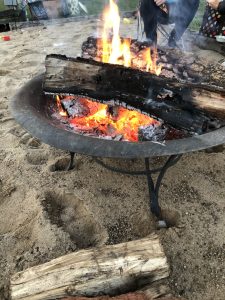
PLAN A PICNIC
Plan a picnic. You can do this with friends or family or on your own.
A picnic breakfast around or near some water would be perfect.
But you can just take a blanket outside to a grassy spot and it will be just fine.
Or if you have a fire pit or place for an outside fire, plan your picnic with Jesus there.
READ and/or LISTEN to the story in John 21.
What do you notice? What does the Holy Spirit speak to you about from this passage?
Sit with Jesus…just be present with him.
Listen to the sounds
Notice the scents
Pay attention to the beauty of creation, even simple things are sacred and beautiful.
Let Jesus speak to you of his great love for you.
I don’t think Jesus was in a hurry at this picnic. So don’t be in a hurry.
I don’t think he was like “I’ve finished with Peter, now let’s get on with the clean up guys!”
Maybe they sat around that fire and told stories about their time together.
Maybe they remembered all the other times Jesus showed up around fish and bread! Providing abundance! And took time to be thankful.
Perhaps they asked a lot questions…I know I would!
Think about how Jesus has provided for you in recent days. Take time to notice and be thankful.
How do you need Jesus to provide for you right now? Talk to him about this.
Sitting across the picnic table with Jesus, what questions do you have for him? Take time to ask Jesus and spend time listening to his answers.
Breathe
Be Still
Notice
Receive his love for you just as you are, right where you are!
You are Invited…on a picnic…to join Jesus at this outdoor table! To be fed and to be restored! Happy Easter.

Jesus provides
Keep an empty plate or a bowl or basket out on your counter or coffee table this week to remind you of how Jesus provides for you IN ABUNDANCE! Remember that he already had fish. He already had breakfast prepared so he knows what you need!
LISTEN TO MORE: NT WRIGHT ON this passage (about 7 min)
MAIN PHOTO: By Metropolitan Hierotheos of Nafpaktos and Agiou Vlasiou
by Carol Dixon
The season of Eastertide (Easter Sunday to Pentecost) seems to be slipping by quickly this year. I have felt an inner compulsion to re-read the accounts of some of the characters who met with the resurrected Jesus and walk with them for a while. I love the way the Easter season continues further into Spring in the Northern Hemisphere and there are so many wonderful Easter accounts in the Gospels for us to contemplate over the weeks between Easter and Ascension Day/Pentecost we are sometimes spoilt for choice.
Last year on Godspacelight I posted some of my imaginative Easter Meditations from the point of view of different characters in the story (Easter Reflections – Godspacelight).
This year I’d like to share some pithy pointers to the stories written by Revd. David Jenkins, Moderator of Northern Synod of the United Reformed Church 1987-2001 and my former boss – I was Moderator’s secretary for 20 years and spent 14 interesting years typing up some of David’s books as well as the more mundane secretarial tasks of typing letters and preparing reports. He has given me permission to reproduce his ponderings and is very happy for his reflections to be used for personal devotions and in worship.
David invites his readers to ponder on each word or phrase and think about the points in the stories that speak particularly to us personally and what they might be saying to us today in the church.

Mary and the gardener John 20.11-16
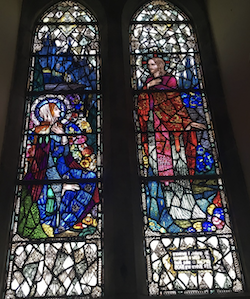 Harry Clarke, Jesus Appears to Mary Magdalene Chapel of the Sacred Heart,
Harry Clarke, Jesus Appears to Mary Magdalene Chapel of the Sacred Heart,
Dingle Co. Kerry, Ireland Wiki media Commons
Dawn. Garden tomb open. Jesus gone.
Mary of Magdala in tears. Love tested.
Spirit destroyed. Horrific weekend.
Who to talk to? Suddenly. A stranger.
Or is the gardener? Short conversation.
Mary: “I’ve lost my dearest friend!
Where have you put him?”
Stranger: “Mary!” Mary: “Rabboni”
Life returns. Spirit renewed.
Easter miracle.
Prayer: Jesus, when grief is raw,
reach out to us;
when endings crowd our days,
create a new dawn for us.
Only you can turn the world’s fears
and tears into opportunities
for love and hope.
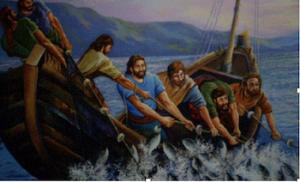
Image from teachingthem.com
Goin’ fishin’ John 21.1-6
Disciples all at sea. Shock. Trauma. Guilt-filled. Jesus gone. Three years down the drain. What next? Peter, James, John, Galilean used-to-be-fishermen. So what now?
“At least we were good at that!” Peter: “Goin’ fishin” Back to the big lake. But no luck. No fish. Stranger on the shore. “Try the other side!” (The cheek of it!) But he is spot on. Huge catch. “Good grief! It’s him!”.
Prayer: God of every lost disciple and pilgrim soul,
keep surprising us when we are all at sea.
Reach out and let your presence resurrect us.
In calm or storm, at dawn or dusk,
let us hear your “Shalom” on the breeze.
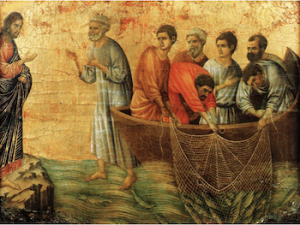
image public domain
Breakfast time John 21.9-12
Fresh fish. Breakfast by the lake. Talk about unexpected. Jesus present after all. No getting away. No good clinging to the past. Easter surprises point to the future. Every meal, communion. Fish. Bread. Guilt wiped away in a simple meal. Still fishing to do. A whole world out there. Eager for good news.
Prayer: Welcoming God, please keep calling us to eat and drink with you,
so that every meal becomes sacrament
and every human being a precious guest.
Call us into fellowship and friendship
until we find Easter strength for each new day.
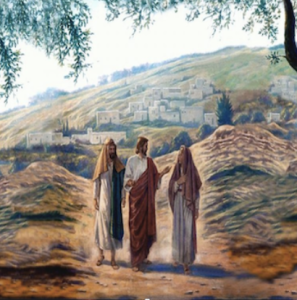
Hiking Luke 24. 13-19
Hikers on the road. Two very sad figures. Not famous disciples.
Cleopas and A.N Other.
Minds, spirits crushed
by the tragedy of recent days.
Jesus crucified. Horrible.
Then another walker joins them, going their pace. Now there are three.
Silence. The stranger says little.
He soaks up their grief,
anger and despair.
It seems he has not read the papers.
They walk. Their unburdening
seems to give them peace. He helps them reflect and, as they walk,
the mist lifts, things become clearer. Amazingly, the stranger helps them
to understand Easter.
Prayer: Mysterious God,
you come to us as one unknown.
You come not with judgment
but with compassion,
not hurrying us but gently
leading us to clarity.
Come alongside us, we pray,
as earth-pilgrims-in-need,
to lift, carry, transform.
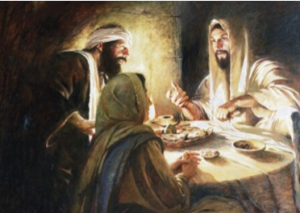
image from Emmaus Road Ministries
B & B at Emmaus Luke 24. 28-32
Time to find accommodation. Two pilgrims plus one. The stranger will now go his own way. Or will he? No, they persuade him to join them. Five star hospitality. Must put it on Trip advisor. They share their evening meal. Then, Wow! The stranger, breaks open the loaf, and it dawns on them who he is. It’s him! In all their journeying, unburdening, and shared blisters, they had been in the presence of the Jesus man! Easter joy is incognito. Deep. Hidden. Amazing.
Prayer: Hidden God, heal broken hearts by broken bread.
Help us to draw Easter strength for our own time.
When endings are all we can think of,
let your loving hospitality open our lives
To receive your Easter gifts of peace, joy and love.
* * * * * * * * * *
I took up David’s challenge to think of key points in one of the Easter stories myself and came up with the following:
Thomas John 24-29
Declaration – die with him. Disaster – death, of his Master. Doubt and Disbelief, – unless I see for myself. Depression turned to delight – Display of Wounds. Deeply moved. Devotion DECLARATION MY LORD AND MY GOD! Blessed are those who believe without seeing.
Prayer: Loving Lord, often like Thomas we doubt your power
to rise above the death-like situations in our lives and in our world.
When we recall the ecological and human-made disasters, sudden deaths,
murders, painful experiences, and serious illness of people around us;
When we think of the wars, bombings, famines, and other disasters
which wreak havoc around us, we want to run away and hide.
Help us to have the courage to reach out and touch your scars,
borne for the world, and for us, so that we may be healed,
renewed, and see your risen life in the broken people and places
of our world and acclaim you again as our Lord and our God. Amen.
Now it’s your turn to ponder on your favourite Gospel passage for Easter. Over to you…
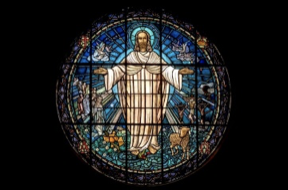
Kruiskerk, Dordrecht, The Netherlands
by Bill Borror
You are my friends if you do what I command you. I do not call you servants any longer….
John 15:14-15
For prayer is nothing else than being on terms of friendship with God.
Teresa of Avila
Fear not the coming of your God; fear not his friendship. He will not (reduce) you when he comes; rather he will enlarge you. So that you might know that he will enlarge you he not only promised to come, saying, ‘I will dwell with them,’ but he also promised to enlarge you, adding, ‘and I will walk with them.’ You see then, if you love, how much room he gives you. Fear is a suffering that oppresses us. But look at the immensity of love. ‘God’s love has been poured into our hearts’ (Romans 5.5).
Augustine of Hippo Sermons, 23.
I must admit that it has taken me the better part of three decades to reembrace the language of “friendship with Jesus.” It is not that I have minimized God’s love for us or ignored what it means for us to grow in love with Christ, but I was reacting to the popular and shallow theology of my evangelical upbringing. The “personal Jesus” that was often promoted was a particular emotive experience that seemed to be not only divorced from historical Christianity, but quite accommodating to whatever cultural and political milieu in which it was situated. As J. B. Philips once observed, that God is too small.
But the answer is not in making God too circuitous or so watered-down that the presented deity literally is not worth getting up on Sunday morning to go and worship. Having spent my entire adult career in mainline protestant churches, I have observed a different kind of flight from historical Christianity, that in many ways is a form of functional atheism. Karl Barth observed, “One cannot speak of God simply by speaking of man in a loud voice.” This God is too thin.
The God revealed in Jesus Christ is both the creator of the cosmos and the lover of the created. Jesus is both the truth incarnate and the maker of breakfast for his disciples. He is both the Resurrection and the Crucified. He is God and Lord and a friend that will never leave us or forsake us. Jesus was the friend of Augustine of Hippo, the shaper of Western Christianity and Jesus was the friend of my grandmother Hattie of Shirley’s Lane WV, the person who first told me about and reflected the God that is Love.
Genuine friendships are built on trust, mutual affection, shared perspectives, and conversations. Friendship with God is not only rooted in a relationship with Jesus, but it is having our “hearts expanded” so that we may love as Jesus loved. This love means caring for the people of God whether we agree with them or not. And it entails embracing the scars of the world, regardless of what that may ultimately cost us.
Neither reform nor deconstruction is going to transform the current state of the church.
William Temple observed, “True worship is when a person, through their person, attains intimacy and friendship with God.” And friendship with God will make our connections with one another look a little more like what Jesus promised when he said the world we know we belong to him by the way we love one other (John 13:35).
photo by Cornelia Steinwender on Unsplash
A Journey Into God’s Resurrection-created World
Download
Celebrate the Easter Season with this free download! Though originally published in 2009, the hope that comes from Resurrection Sunday and continues into Pentecost is always needed! We have made some small additions for a COVID-19 reality, but feel that many of the suggestions can be adapted. Christine invites us to Journey Into God’s Resurrection-created World as a way to celebrate this season. The joy that comes when we recognize what Jesus has done for us is infectious and this book outlines creative ways to invest in the lives of those around us, including those we normally disregard.
I am looking out on a very grey and cold morning here in Seattle. There is fresh snow on the Olympic mountains, a surprising contrast to the lilac bush now in full bloom outside my window. Spring is always an uncertain season with winter reluctant to give up its hold on us, while the first glimmers of summer struggle to emerge. It is a season that is always filled with growth and promise, with joy and expectation however, which I am very aware of as I look ahead to the next few weeks.
I am getting ready for The Spirituality of Gardening webinar and am excited to share some of my insights with you. This is not just for gardeners but for anyone who draws close to God in nature whether it be while sitting beside a waterfall, on a beach or wandering through a forest. This is for anyone who wants draw closer to the God who comes to us in the creation story as the planter of gardens and the nurturer of all that is good and beautiful. This webinar is for anyone who wants to discover the enriching awe and wonder of interacting with God’s good creation. I am very much looking forward to the fun interactions and the mutual learning this will provide for us. I hope you will join us on May 11th for this valuable seminar.
My head is still ringing with the sound of wonderful music, poetry and wisdom from the Inhabit conference Tom and I attended over the weekend. Between sessions I raced outside to enjoy the beauty of the Dumas Bay Retreat Centre where the conference was held this year. Watching the sun set over the water was an added delight. I appreciated the cries for lament and justice, for equity, reparation and restitution, and have returned home with renewed zeal for the daunting task that still faces us to bring justice, mercy and God’s love to our world. My one disappointment was that virtually no sessions talked about the climate crisis and our need to face together our destruction of this good earth and the extinction of many of the creatures we share it with.
It is my belief that our concerns for our sisters and brothers who face inequity, poverty, violence and abuse around the world should be grounded in our concern for the planet on which we live. As I commented in yesterday’s Meditation Monday: God’s Dream Unfolding “For me, God’s dream is expansive and whole. It’s a dream for all of creation – plants, animals, people – living in shalom together with God.” This post, like future Meditation Mondays, is available in audio form too for paid subscribers to my Substack. Several people told me how much they enjoy listening to the posts rather than reading them, especially as my emotions and feels come through more clearly. Please consider joining those who support my ministry in this way.
As you can see I am really getting into this podcast business. A year ago it never occurred to me that I would launch not just one but two podcasts. On Wednesday we launched the 6th episode of Liturgical Rebels, a fun interview with my good friend, frequent partner in crime and creative worship leader Lilly Lewin. Our next episode will be a very passionate interview with author and activist Shane Claiborne. This week, together with Forrest Inslee, I will interview Brian McLaren about his new book Life After Doom, and next week will chat to Tony Jones about his book The God of Wild Places. I am also getting ready to interview my yarn bombing friend Naomi Lawrence, and iconographer Kelly Latimore, and have several others in the pipeline. I feel the podcast is gathering steam. We just had the 1000th download and wherever I share about it I find people are very excited about my emphasis on helping people to think outside the box about what it means to worship God, what is a spiritual practice and how do we draw close to the Creator of our universe.
Godspacelight is thriving too. On Saturday, Emily Huff, in her post for International Dance Day shared that wonderful song, Lord of the Dance. She comments: “This song is a beautiful invitation to us as we listen to God saying, “Come dance with me” to us through this day that God has given to us. What might it be like to stand on God’s feet just like a little girl might stand on her father’s feet in learning how to dance? What might it look like to let God take the lead as we twirl and swing together around the dance floor and as everything else fades away as we dance?”
Lilly Lewin’s Freerange Friday Discovering the Garden of Love talks about the boxes we all tend to live in – failure, fear and not enough then reflects on love – not as a box but as a garden. Such a beautiful concept.
On Thursday we reposted an inspiring post Shift #5 An Ecological Mission, by James Amadon from the Circlewood blog, The Ecological Disciple. I love his assertion that “The current ecclesial crisis is an opportunity to reassess, among other things, the Church’s understanding and practice of mission. And this work is well underway”. Lots to reflect on here.
Are we too busy for beauty,
Too distracted to practice wonder?
Do we have the courage,
To live in the freedom of awe
Absorbing the rhythm
Of our God soaked world.
Our bodies carry the essence of God
Within and without,
Alone and in community,.
Eternity pulses within us, around us
All through all creation.
Many blessings
 Spirituality of Gardening – A virtual retreat
Spirituality of Gardening – A virtual retreat
On May 11 from 9:30-12:30 pm PT (check my timezone) We will discuss connections between community, spirituality and gardening. Explore the wonderful ways that God and God’s story are revealed through the rhythms of planting, growing and harvesting as well as the beauty of nature. This webinar is for anyone who admires the beauty of God’s good creation, likes to walk in nature, sit by the ocean or just relax and listen to the birds in the trees. It is based on Christine Sine’s popular book, To Garden with God and each participant will receive a digital copy of this book.
As an Amazon Associate I receive a small amount for purchases made through appropriate links. Thank you for supporting Godspace in this way.
As an Amazon Associate, I receive a small amount for purchases made through appropriate links.
Thank you for supporting Godspace in this way.
When referencing or quoting Godspace Light, please be sure to include the Author (Christine Sine unless otherwise noted), the Title of the article or resource, the Source link where appropriate, and ©Godspacelight.com. Thank you!


